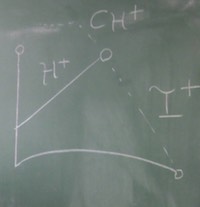Analogues of the Schwarzschild and Kerr solution exist when a cosmological constant is added to the Einstein equations. In the case where this cosmological constant is negative, this solution is known as Kerr-AdS, as near infinity it is asymptotic to the celebrated anti-de Sitter space (AdS).
The infinity of AdS spacetime is timelike, and thus the above spacetimes all fail to be "globally hyperbolic". Nonetheless, dynamical questions can be considered by effectively imposing boundary conditions at infinity.
As I conjectured with Gustav Holzegel in 2006 (see our joint paper here), under the most obvious choice of such boundary conditions, pure anti-de Sitter space is expected to be dynamically unstable. In spherically symmetric models like that of a self-gravitating scalar field, arbitrary small perturbations of Minkowski space are expected to form trapped surfaces, and then asymptote, in fact exponentially in time, to Schwarzschild-AdS.
The stability of the latter solution has been indeed shown by Holzegel and Jacques Smulevici.
The (necessarily non-spherically symmetric case) of vacuum perturbations is subject to another type of instability. This is already apparent when looking at the wave equation on a fixed Schwarzschild-anti de Sitter and Kerr-anti de Sitter. Here, Holzegel and Smulevici have shown (see this link) that solutions decay logarithmically in time. Moreover, they have shown that this type of decay rate is sharp in a precise sense. The origin of this slow decay is that this problem admits stable trapped null geodesics which bounce infinitely many times off the asymptotically-AdS boundary.
This slow decay rate has the ominous feature that dispersive effects alone are no longer sufficient to guarantee or even suggest stability.
Let us note that for Kerr–anti de Sitter black holes rotating faster than the so-called Hawking–Reall bound, then Dominic Dold has shown that there exist solutions of the wave equation which grow exponentially. This is analogous to the superradiant instability for the Klein–Gordon equation on Kerr, first conjectured in the 1970's and recently shown by Yakov Shlapentokh-Rothman.
